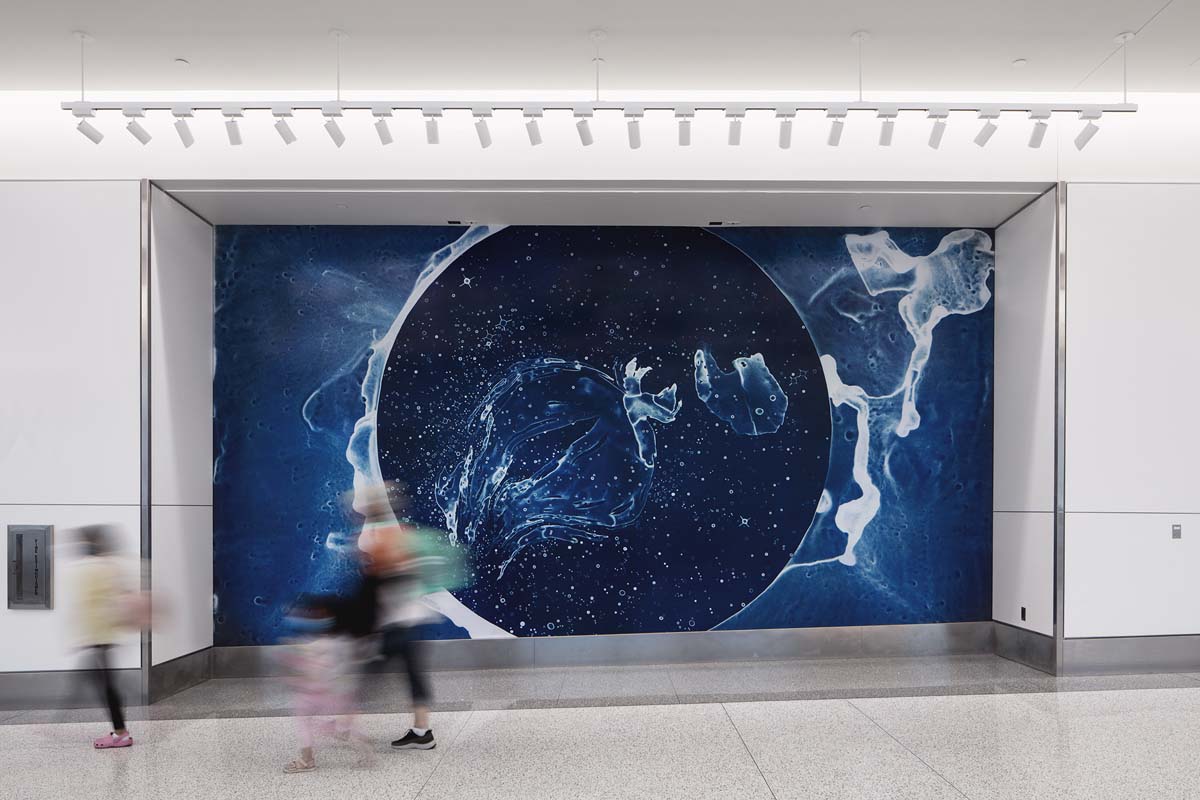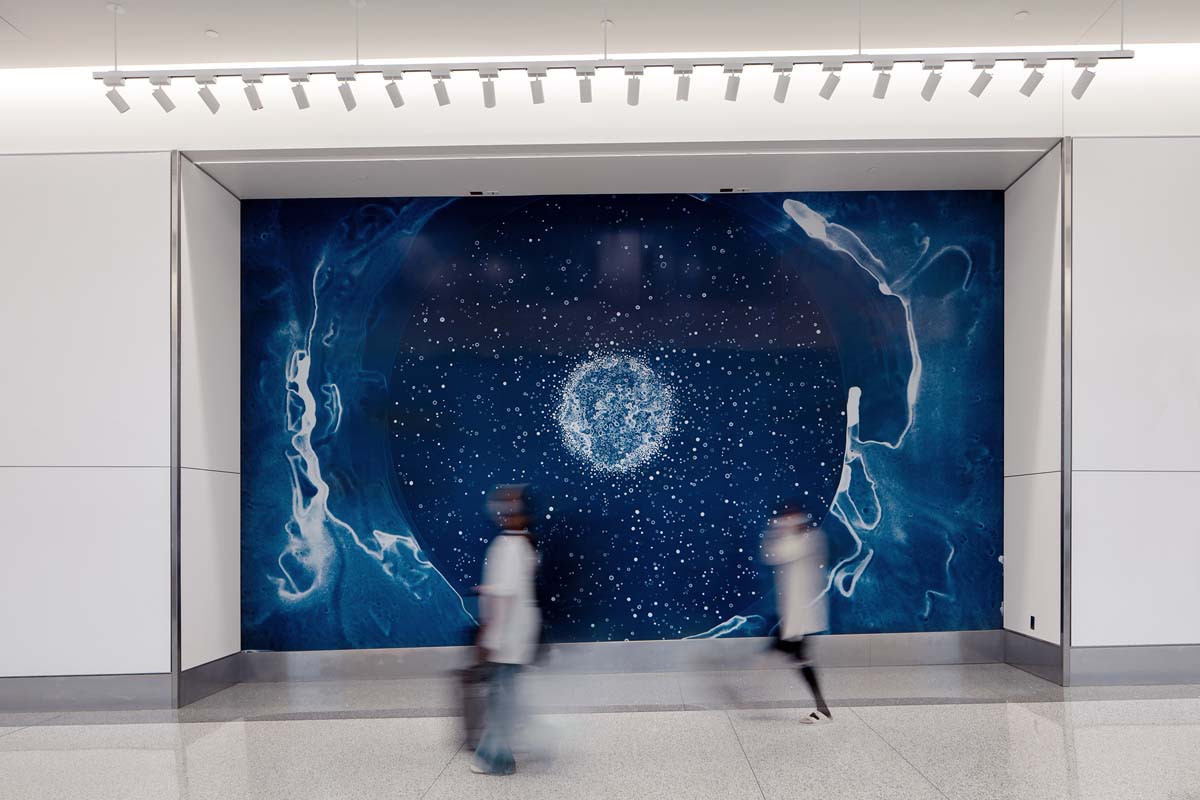Artist: Lia Halloran
Terminal 2/3, Departures Level, post-security
In Your Body Is A Space That Sees, Los Angeles artist Lia Halloran combines ink and light to celebrate women’s contributions to science. Her large-scale cyanotypes recall telescopic views of the night sky, captured in photographic emulsion on glass plates in the late 19th and early 20th centuries, and used by a group of female astronomers to make extraordinary discoveries about the universe.
Halloran begins each piece by painting her impression of an astronomical image, in ink the color of midnight, on a sheet of transparent drafting film. The framed artwork included in the exhibition is an original ink-on-film rendering of this kind. Such a painting can also serve as a negative: When overlaid on chemically treated paper and left outdoors to absorb the California sunshine, the painted negative produces a blue-hued cyanotype print of the same vision The three monumental images are large-scale versions of Halloran’s distinctive cyanotypes.
Time figures importantly in these artworks. All astronomical imagery offers a look back in time, to the moment when light left the object under study. Although the human eye registers only the impression of a moment, an artist or a photographic plate can collect light over a period of hours and present a composite view of entities too faint for the eye to register at a glance. The turn-of-the-century photographic negatives that Halloran examined were made by long exposure to starlight falling through telescopes onto glass plates coated with photographic emulsion. Halloran’s cyanotypes emerge through exposure to the light of the nearest star, our Sun.
Although sunlight and starlight contain all colors, the iron salts employed in the cyanotype process respond only to ultraviolet light, which turns them Prussian blue.
The titles of these works acknowledge the individual women who drew new truths from close study of the glass plates. For example, one of them determined that stars consist mainly of hydrogen and helium, while another divined a means for measuring distances across deep space. Williamina Fleming, who served as both astronomer and curator of the several hundred thousand astronomical photographs at Harvard, was the first person to divine a shape resembling a horse’s head among the stars of the constellation Orion, the Hunter.
Development of Your Body Is A Space That Sees was supported by an Art Works grant from the National Endowment for the Humanities. The artist is represented by Luis De Jesus Los Angeles, where this series was first shown. It has since traveled as a solo exhibition to the Lux Art Institute in San Diego, the Schneider Museum of Art in Ashland, Oregon, and the University of Maryland Art Gallery, College Park.
Lia Halloran is Associate Professor and Chair of the Department of Art at Chapman University in Orange, California, where she also teaches courses that explore the intersection of art and science. You can see more of Lia Halloran’s work at: www.liahalloran.com or on Instagram @liahalloranstudio.
Exhibition text by Dava Sobel, author of Longitude, Galileo’s Daughter, and, most recently, The Glass Universe, which tells the hidden history of the women whose contributions to astronomy expanded our understanding of the stars and our place among them.
Photos courtesy of SKA Studios LLC. Click image to zoom.







